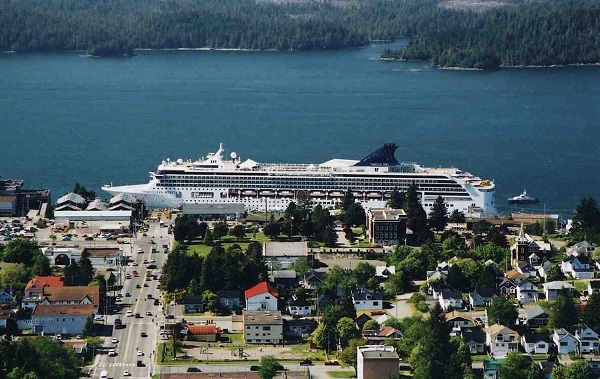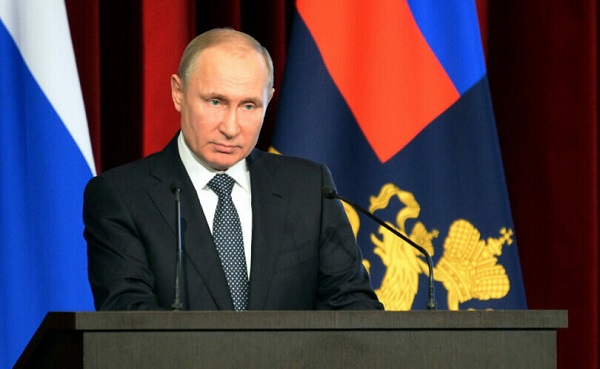Uncategorized
Maduro faces off with US over Venezuela rival’s power claim

CARACAS, Venezuela — Venezuelans headed into uncharted political waters Thursday, with the young leader of a newly united and combative opposition claiming to hold the presidency and socialist President Nicolas Maduro digging in for a fight with the Trump administration.
Violence flared again Wednesday during big anti-government demonstrations across Venezuela, and at least seven protesters were reported killed in the escalating confrontation with Maduro, who has been increasingly accused of undemocratic
Juan Guaido, the new leader of the opposition-controlled National Assembly, turned up the heat by declaring himself interim president before a mass of demonstrators in Caracas. He said it is the only way to end the Maduro “dictatorship” in Venezuela, which has seen millions flee in recent years to escape sky-high inflation and food shortages.
“We know that this will have consequences,” Guaido shouted to the cheering crowd, then slipped away to an unknown location amid speculation that he would soon be arrested.
In a united and seemingly
But Russia, China, Iran, Syria and Turkey have voiced their backing for Maduro’s government.
President Donald Trump promised to use the “full weight” of U.S. economic and diplomatic power to push for the restoration of Venezuela’s democracy. “The people of Venezuela have courageously spoken out against Maduro and his regime and demanded freedom and the rule of law,” he said in a statement.
Maduro fired back by breaking diplomatic relations with the U.S., the biggest trading partner for the oil-exporting country, and ordering American diplomats to get out of the country within 72 hours. Washington said it would ignore the order.
The socialist leader, who so far has been backed by the military, as well as the government-packed courts and a constituent assembly, recalled the long history of heavy-handed U.S. interventions in Latin America during the Cold War as he asked his allies for support.
“Don’t trust the gringos,” he thundered to a crowd of red-shirted supporters gathered at the presidential palace. “They don’t have friends or loyalties. They only have interests, guts and the ambition to take Venezuela’s oil, gas and gold.”
China’s Foreign Ministry called on the United States to stay out of the crisis, while Russia’s deputy foreign minister warned the U.S. against any military intervention in Venezuela.
Some Russian officials reacted with anger to the opposition protests. Alexei Pushkov, chairman of the information committee at the Russian Federation Council, called Guaido’s declaration “an attempted coup” backed by the U.S.
Russia has been propping up Maduro with arms deliveries and loans. Maduro visited Moscow in December, seeking Russia’s political and financial support. Over the last decade, China has given Venezuela $65 billion in loans, cash and investment. Venezuela owes more than $20 billion.
On Thursday, attention will shift to Washington, where diplomats at the Organization of American States will hold an emergency meeting on the Venezuelan situation. The debate promises to be charged, and the National Assembly’s newly picked diplomatic envoy will be lobbying to take Venezuela’s seat from Maduro’s ambassador.
Meanwhile, many Venezuelans will be looking for Guaido to re-emerge and provide guidance on the opposition’s next steps. The armed forces’ top command, which has so far remained silent, is also expected to issue a statement, although nobody expects the general’s loyalties to Maduro to have shifted.
The price of oil slipped for the third time in four days Wednesday, an indication that international energy markets are not overly concerned yet that the situation in Venezuela — America’s third top oil supplier and owner of Houston-based Citgo — will disrupt global crude supplies.
Tensions began ramping up earlier this month as Maduro took the oath of office for a second six-year term won in an election last May that many in the region contend was not free or fair because his strongest opponents were barred from running.
The 35-year-old Guaido, a virtually unknown lawmaker at the start of the year, has reignited the hopes of Venezuela’s often beleaguered opposition by taking a rebellious tack amid Venezuela’s crushing economic crisis.
He escalated his campaign Wednesday by declaring that the constitution gives him, as president of the congress, the authority to take over as interim president and form a transitional government until he calls new elections.
Raising his right hand in unison with tens of thousands of supporters, he took a symbolic oath to assume executive powers: “Today, January 23, 2019, I swear to formally assume the powers of the national executive as president in charge of Venezuela.”
The assault on Maduro’s rule came after large crowds gathered in Caracas waving flags and chanting “Get out, Maduro!” in what was the biggest demonstration since a wave of unrest that left more than 120 dead in 2017.
There were no signs that security forces heeded Guaido’s call to join the anti-Maduro movement and go easy on demonstrators. Hours after most demonstrators went home, violence broke out in Altamira, an upscale zone of Caracas and an opposition stronghold, when National Guardsmen descended on hundreds of youths, some of them with their faces covered, lingering around a plaza. Popping tear gas canisters sent hundreds running and hordes of protesters riding two and three on motorcycles fleeing in panic.
Blocks away, a small group knocked a pair of guardsmen riding tandem off their motorcycle, pelting them with coconuts as they sped down a wide avenue. Some in the group struck the two guardsmen with their hands while others ran off with their gear and set their motorcycle on fire.
Meanwhile, four demonstrators were killed by gunfire in the western city of Barinas as security forces were dispersing a crowd. Three others were killed amid unrest in the border city of San Cristobal.
Amid the showdown, all eyes are on the military, the traditional arbiter of political disputes in Venezuela — and to which Guaido has been targeting his message.
On Monday, a few dozen national guardsmen seized a stockpile of assault rifles in a pre-dawn uprising that was quickly quelled, although residents in a nearby slum showed support for the mutineers by burning cars and stoning security forces. Disturbances flared up that night in other working-class
___
Associated Press journalists around the world contributed to this report.
___
Joshua Goodman on Twitter: https://twitter.com/APjoshgoodman
Joshua Goodman, The Associated Press
Uncategorized
Cost of bureaucracy balloons 80 per cent in 10 years: Public Accounts

The cost of the bureaucracy increased by $6 billion last year, according to newly released numbers in Public Accounts disclosures. The Canadian Taxpayers Federation is calling on Prime Minister Mark Carney to immediately shrink the bureaucracy.
“The Public Accounts show the cost of the federal bureaucracy is out of control,” said Franco Terrazzano, CTF Federal Director. “Tinkering around the edges won’t cut it, Carney needs to take urgent action to shrink the bloated federal bureaucracy.”
The federal bureaucracy cost taxpayers $71.4 billion in 2024-25, according to the Public Accounts. The cost of the federal bureaucracy increased by $6 billion, or more than nine per cent, over the last year.
The federal bureaucracy cost taxpayers $39.6 billion in 2015-16, according to the Public Accounts. That means the cost of the federal bureaucracy increased 80 per cent over the last 10 years. The government added 99,000 extra bureaucrats between 2015-16 and 2024-25.
Half of Canadians say federal services have gotten worse since 2016, despite the massive increase in the federal bureaucracy, according to a Leger poll.
Not only has the size of the bureaucracy increased, the cost of consultants, contractors and outsourcing has increased as well. The government spent $23.1 billion on “professional and special services” last year, according to the Public Accounts. That’s an 11 per cent increase over the previous year. The government’s spending on professional and special services more than doubled since 2015-16.
“Taxpayers should not be paying way more for in-house government bureaucrats and way more for outside help,” Terrazzano said. “Mere promises to find minor savings in the federal bureaucracy won’t fix Canada’s finances.
“Taxpayers need Carney to take urgent action and significantly cut the number of bureaucrats now.”
Table: Cost of bureaucracy and professional and special services, Public Accounts
| Year | Bureaucracy | Professional and special services |
|
$71,369,677,000 |
$23,145,218,000 |
|
|
$65,326,643,000 |
$20,771,477,000 |
|
|
$56,467,851,000 |
$18,591,373,000 |
|
|
$60,676,243,000 |
$17,511,078,000 |
|
|
$52,984,272,000 |
$14,720,455,000 |
|
|
$46,349,166,000 |
$13,334,341,000 |
|
|
$46,131,628,000 |
$12,940,395,000 |
|
|
$45,262,821,000 |
$12,950,619,000 |
|
|
$38,909,594,000 |
$11,910,257,000 |
|
|
$39,616,656,000 |
$11,082,974,000 |
Uncategorized
Trump Admin Establishing Council To Make Buildings Beautiful Again


From the Daily Caller News Foundation
By Jason Hopkins
The Trump administration is creating a first-of-its-kind task force aimed at ushering in a new “Golden Age” of beautiful infrastructure across the U.S.
The Department of Transportation (DOT) will announce the establishment of the Beautifying Transportation Infrastructure Council (BTIC) on Thursday, the Daily Caller News Foundation exclusively learned. The BTIC seeks to advise Transportation Secretary Sean Duffy on design and policy ideas for key infrastructure projects, including highways, bridges and transit hubs.
“What happened to our country’s proud tradition of building great, big, beautiful things?” Duffy said in a statement shared with the DCNF. “It’s time the design for America’s latest infrastructure projects reflects our nation’s strength, pride, and promise.”
“We’re engaging the best and brightest minds in architectural design and engineering to make beautiful structures that move you and bring about a new Golden Age of Transportation,” Duffy continued.
Mini scoop – here is the DOT’s rollout of its Beautifying Transportation Infrastructure Council, which will be tasked with making our buildings beautiful again. pic.twitter.com/
9iV2xSxdJM — Jason Hopkins (@jasonhopkinsdc) October 23, 2025
The DOT is encouraging nominations of the country’s best architects, urban planners, artists and others to serve on the council, according to the department. While ensuring that efficiency and safety remain a top priority, the BTIC will provide guidance on projects that “enhance” public areas and develop aesthetic performance metrics.
The new council aligns with an executive order signed by President Donald Trump in August 2025 regarding infrastructure. The “Making Federal Architecture Beautiful Again” order calls for federal public buildings in the country to “respect regional architectural heritage” and aims to prevent federal construction projects from using modernist and brutalist architecture styles, instead returning to a classical style.
“The Founders, in line with great societies before them, attached great importance to Federal civic architecture,” Trump’s order stated. “They wanted America’s public buildings to inspire the American people and encourage civic virtue.”
“President George Washington and Secretary of State Thomas Jefferson consciously modeled the most important buildings in Washington, D.C., on the classical architecture of ancient Athens and Rome,” the order continued. “Because of their proven ability to meet these requirements, classical and traditional architecture are preferred modes of architectural design.”
The DOT invested millions in major infrastructure projects since Trump’s return to the White House. Duffy announced in August a $43 million transformation initiative of the New York Penn Station in New York City and in September unveiledmajor progress in the rehabilitation and modernization of Washington Union Station in Washington, D.C.
The BTIC will comprise up to 11 members who will serve two-year terms, with the chance to be reappointed, according to the DOT. The task force will meet biannually. The deadline for nominations will end Nov. 21.
-

 Alberta19 hours ago
Alberta19 hours agoThe Recall Trap: 21 Alberta MLA’s face recall petitions
-

 Fly Straight - John Ivison2 days ago
Fly Straight - John Ivison2 days agoMPs who cross the floor are dishonourable members
-

 illegal immigration19 hours ago
illegal immigration19 hours agoUS Notes 2.5 million illegals out and counting
-

 International19 hours ago
International19 hours agoTyler Robinson shows no remorse in first court appearance for Kirk assassination
-

 2025 Federal Election2 days ago
2025 Federal Election2 days agoToo Close for Comfort: Carney Floor Crosser Comes From a Riding Tainted by PRC Interference
-

 Energy1 day ago
Energy1 day agoCanada’s future prosperity runs through the northwest coast
-

 illegal immigration2 days ago
illegal immigration2 days agoEXCLUSIVE: Canadian groups, First Nation police support stronger border security
-

 Business2 days ago
Business2 days agoBrutal economic numbers need more course corrections from Ottawa










